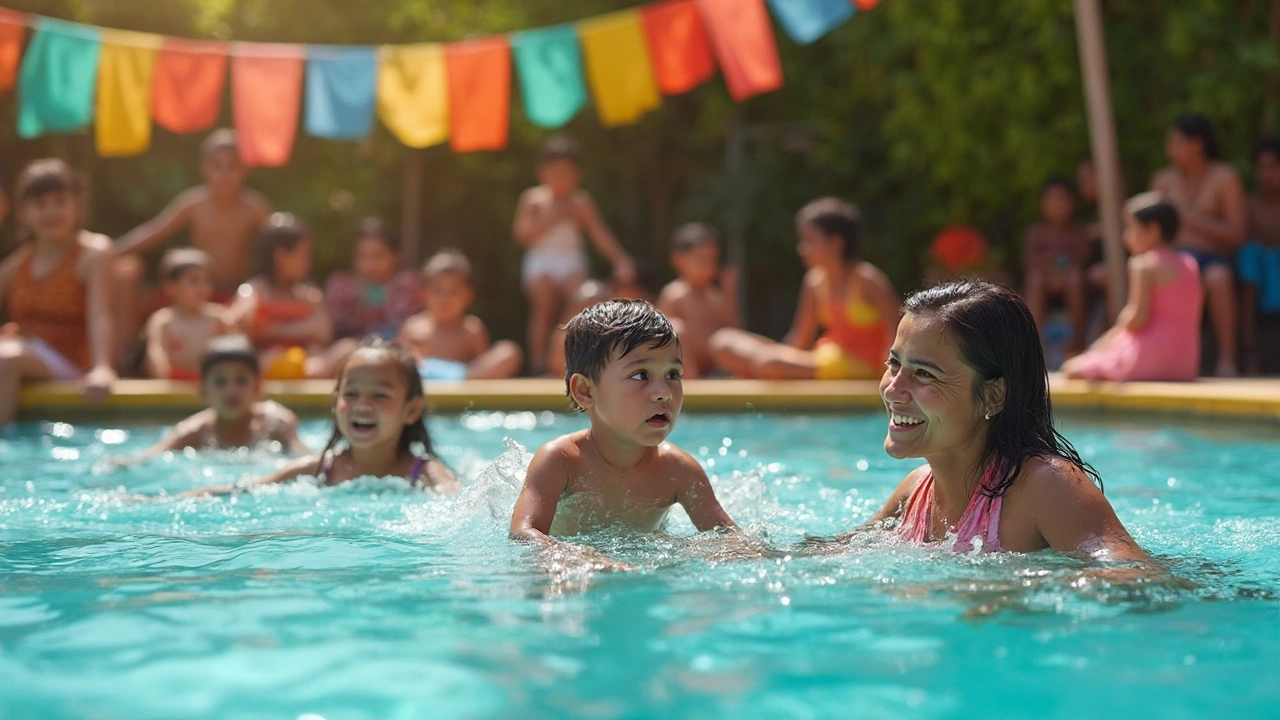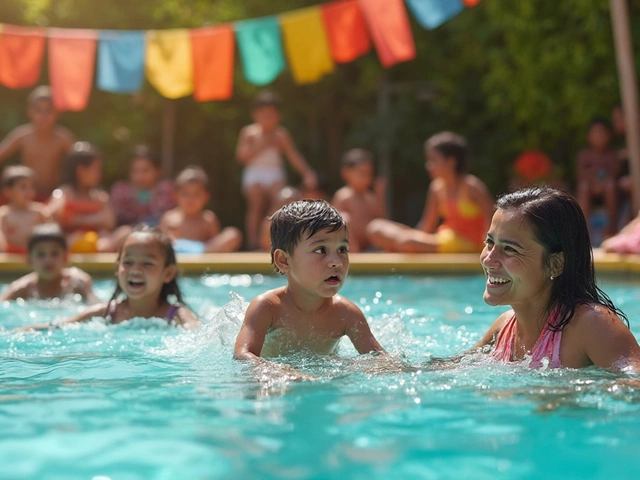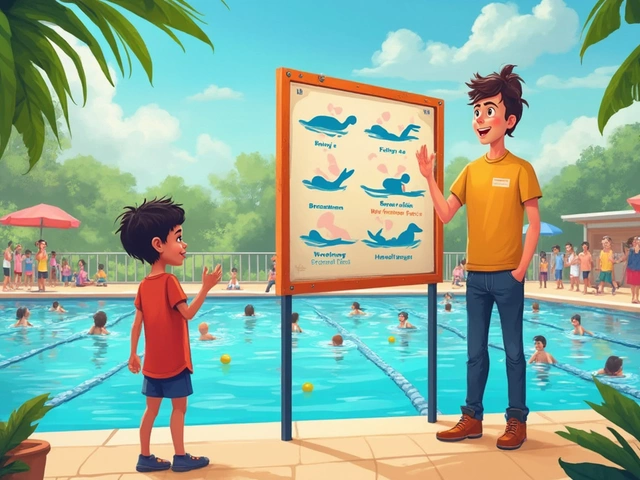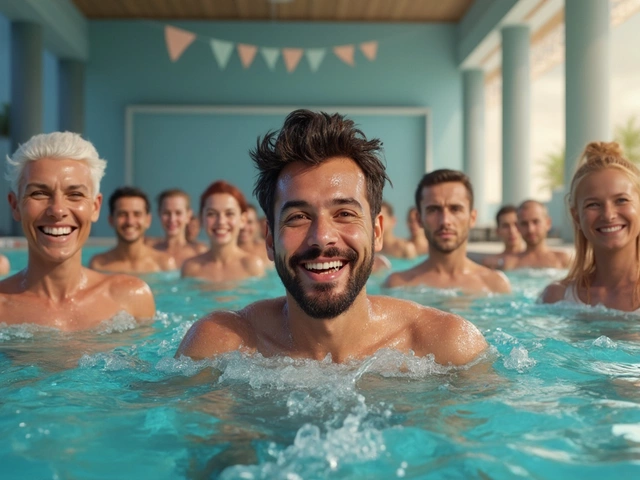Wondering when your kid should start swimming? The answer isn’t as simple as picking a birthday. Age plays a huge part in how kids pick up swim skills, but every child is different. Some toddlers love splashing and kicking around at one year old. Others take their time before they’re ready to get their face wet.
The American Academy of Pediatrics says swim lessons can begin as early as age one for most families. But just because swim classes are available for babies doesn’t mean every tot is ready to learn real skills right away. Infants might get comfortable in the water and have fun, but they won’t learn true strokes or safety techniques until they’re older.
Still, being in the water early can set the stage for being happy and confident around pools and beaches later. You want your child to build trust, not fear, and lessons at the right time make a real difference. If you’re worried about water safety or have a little one who’s already obsessed, knowing what’s realistic at each age will help you plan smart.
- Why Age Matters in Learning to Swim
- Expert Guidelines on Starting Age
- What Young Learners Need
- Tips for Parents to Choose the Right Time
- Mistakes to Avoid When Enrolling
Why Age Matters in Learning to Swim
The age you start swim lessons can shape how quickly and safely a child becomes comfortable in water. Kids' bodies and brains develop fast, but not all at the same rate. For example, a toddler’s motor skills and muscle strength are way different from a first grader’s. That makes a big difference in what they can actually do in the pool.
Babies under one mostly learn to float with help. Real swimming motions, like kicking and paddling, usually show up a bit later. That’s because coordination and muscle power aren’t fully there yet. Most four- to six-year-olds have developed enough to put together basic strokes and swimming moves.
Starting early isn’t just about learning to swim faster. Research from the National Institutes of Health found that formal swimming lessons for kids ages one to four can lower drowning risk by 88%. That’s huge, since drowning is a top cause of accidental death in young kids. Early lessons also help kids stay calm around the water instead of panicking.
Kinder and preschool swim classes often focus on water play—think blowing bubbles, floating, and grabbing pool walls. Older kids shift to techniques like proper kicks and putting their faces in fully. So, while babies gain comfort and routine, real water skills get rolling as they get older and stronger.
| Age Range | Common Skills Learned |
|---|---|
| 6-12 months | Water comfort, floating with support, playful introduction |
| 1-3 years | Basic movement in water, assisted kicking, breath control |
| 4-6 years | Basic strokes, unassisted floating, pool safety basics |
| 7+ years | Stroke development, treading water, endurance |
There’s no magic age that fits all. Some kids are fearless and ready at two, while others take until five or six before feeling okay going under. The key is to watch your child’s comfort, coordination, and interest. Choosing the right time for swimming lessons means better experiences and safer swimmers.
Expert Guidelines on Starting Age
Figuring out when to start swimming lessons has real science behind it. Groups like the Centers for Disease Control and Prevention (CDC) and the American Academy of Pediatrics (AAP) have put a lot of thought into this. They now say most kids can safely start lessons around age one, but it depends on your child’s development, comfort in water, and family routine. There’s no magic month or day—just some clear points to keep in mind.
Here’s what top experts actually tell parents:
- For babies under 1 year, lessons aren’t focused on real swimming but water play and getting used to the feel of water.
- Starting swim lessons from age 1 can help lower drowning risks, especially if you have a pool at home or live near water.
- Between ages 1 and 4, kids learn the basics: floating, getting to safety, and maybe even paddling short distances.
- The best age for real skill-building is typically after age 4, when kids are more coordinated and can follow instructions.
Check out what the research and professional advice say:
| Organization | Recommended Starting Age | Notes |
|---|---|---|
| American Academy of Pediatrics (AAP) | 1 year | Focus on water safety for toddlers. Best outcomes seen when families add pool fences and supervision, too. |
| Centers for Disease Control (CDC) | 1 year | Early lessons plus adult watchfulness cut drowning risk. Lessons alone aren’t enough to keep kids safe. |
| Swim England | Parent & baby classes from a few months old | Structured learning starts around age 4 for swimming strokes. |
Here’s the bottom line: even though you’ll see swim programs for babies as young as six months, real swimming lessons—where kids actually learn rescue moves and basic strokes—usually work best from ages 1 to 4 and up. Every child’s timing will look slightly different, but guidance from the pros says don’t wait too long, especially if you have water nearby. But don’t stress if your three-year-old isn’t a fish yet; progress is different for every kid.

What Young Learners Need
Kids picking up swimming for the first time don’t need strict lessons or technical drills. At a young age, it’s all about comfort and building water confidence. The most important focus? Helping children learn to enjoy being in the water without fear—this is the real foundation according to swim coaches everywhere.
Babies and toddlers (from about one year up) should get familiar with simple skills like kicking, blowing bubbles, and getting their face wet. Floatation isn’t just some fancy trick—knowing how to float on their back or roll over if they fall in can actually save lives. The swimming lessons at this stage look different than classes for older kids; you’ll see more games, singing, and lots of parent participation.
Here’s a quick breakdown of what’s practical at different young ages:
| Age Range | Skills to Focus On |
|---|---|
| 1-2 years | Water play, floating with help, gentle kicking, getting used to water splashing on face |
| 3-4 years | Blowing bubbles, basic arm and leg movements, learning to enter and exit pool safely, back float with support |
| 4-5 years | Front float, back float, gliding, beginning strokes with help, jumping in and returning to side |
Patience is everything. No one expects perfect strokes or Olympic-level swimming at this point. Instructors should create a positive, low-pressure vibe so kids don’t get scared or frustrated. If your pool allows, join your child in the water for some extra encouragement.
- Never leave kids unsupervised—drowning happens silently and fast.
- Dress them in swim diapers and snug suits for safety and comfort.
- Keep lessons short and frequent; kids learn best in small chunks (think 20-30 minutes).
- Look for programs with certified swim teachers who know how to keep things both safe and fun.
The end goal right now isn’t perfection, it’s comfort, safety, and happy water memories that make later skills way easier to learn.
Tips for Parents to Choose the Right Time
Picking the right time for swimming lessons isn’t just about age. Every kid has their own pace, so let’s break down what to look for and what actually works in real life.
- Look for comfort in the water. If your child freaks out in the bath or hates splashing, lessons might be stressful. Wait until they enjoy simple water play before signing up.
- Check physical milestones. Head control, balance, and being able to follow basic instructions matter more than the number on the cake. Most kids can focus on simple directions and use their arms and legs to move by age 2 or 3.
- Consider attention span. If your child can’t sit still for five minutes, they might not be ready to take turns or listen to the teacher in a group class.
- Factor in your own readiness. Parent-child classes work best when you’re up for getting in the pool, too, especially for those under three. If you’re uneasy about water, kids usually pick up that vibe.
- Check your local options. Not all swim schools are set up for every age. Some programs group kids by ability instead of age, which can be less intimidating for late bloomers or first-timers.
If you’re still unsure, here’s a quick look at typical times kids start swim lessons in the U.S.:
| Age Group | Common Start Age | Focus of Lessons |
|---|---|---|
| Babies (6–18 months) | 12–18 months | Water comfort and parent bonding |
| Toddlers (18 months–3 years) | 2–3 years | Basic water safety, blowing bubbles |
| Preschoolers (3–5 years) | 3–4 years | Float, kick, arm movement, follow simple rules |
| School-age (5+ years) | 5+ years | Swim strokes, treading water, independent skills |
Ask the instructor if they’ll let you watch or do a trial class. Sometimes, seeing your child in that new setting is all you need to decide if it’s time or if waiting a few months is a better move. Some programs also offer private lessons, which can help shy or extra young kids warm up to things at their own pace. Remember, it’s not a race—confidence and comfort pay off way more than starting super early.
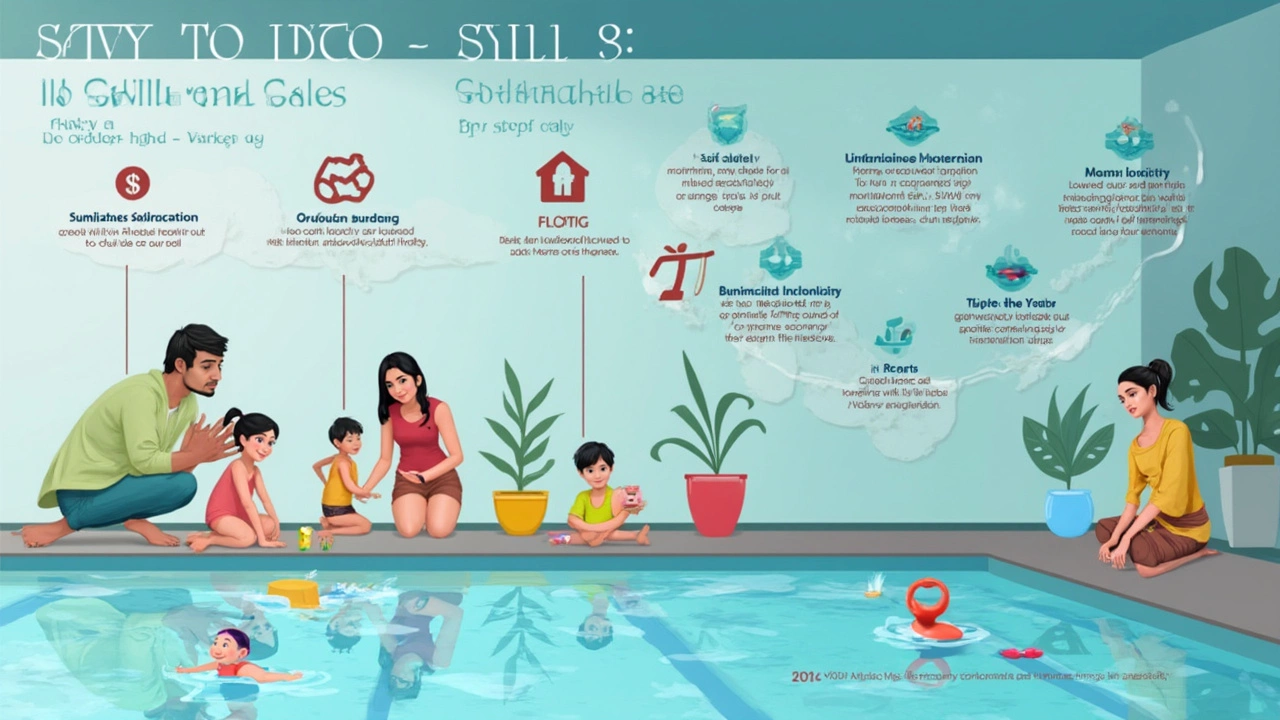
Mistakes to Avoid When Enrolling
A lot of parents leap right into swimming lessons without really checking every detail. That’s why problems pop up. If you don’t match the timing, class, and expectations to your child’s age and readiness, things can get rocky fast. Here’s what happens most often, and how you can skip the stress.
- Pushing Kids Before They're Ready: Just because there’s a spot in baby swim class doesn’t mean your child is developmentally ready. Kids under four just aren’t built for real swim strokes—they benefit more from fun water play and learning to be comfortable.
- Assuming Swim Lessons Equal Drowning Protection: This is a common one. According to the CDC, swim lessons lower the risk of drowning, but they’re not a guarantee. Adult supervision around water is always necessary, no matter how skilled your child gets.
- Choosing Instructors Without Credentials: Not all swim schools have qualified teachers. Look for certifications from groups like the American Red Cross or YMCA. The right teacher knows water safety, not just how to teach a stroke.
- Focusing Only on Technique: If the instructor is obsessed with strokes but skips on safety—like floating, treading, or safe pool exits—you’re missing the point. Kids need practical skills more than perfect form at first.
- Ignoring Your Child's Comfort Level: Some kids get scared or overwhelmed, and parents sometimes miss the warning signs. Slow things down if your child consistently resists or dreads going to class.
Here’s some data to put things into perspective:
| Mistake | Potential Result |
|---|---|
| Starting too young | Frustration, little skill learned |
| No focus on safety skills | Gaps in emergency response |
| Poorly trained teacher | Kids pick up bad habits |
| Overconfidence after lessons | Less attentive supervision, higher chance of risky behavior |
Swim lessons should feel like a positive step for both parent and child. As Susan Dawson-Cook, swim coach and author, says:
“The best swim programs teach kids respect for water and skills for emergencies, not just strokes. Never treat swim lessons as a replacement for careful adult watch.”
Before you sign up, watch a class or two, talk to teachers, and ask what skills they focus on for your child’s age. That way, you’ll avoid those classic mistakes and set your kid up for real water confidence.
